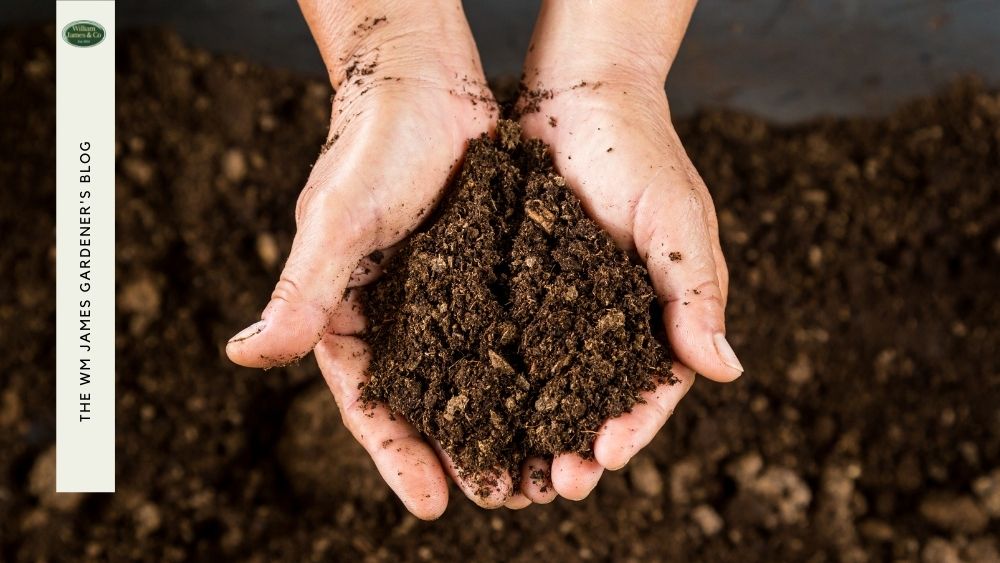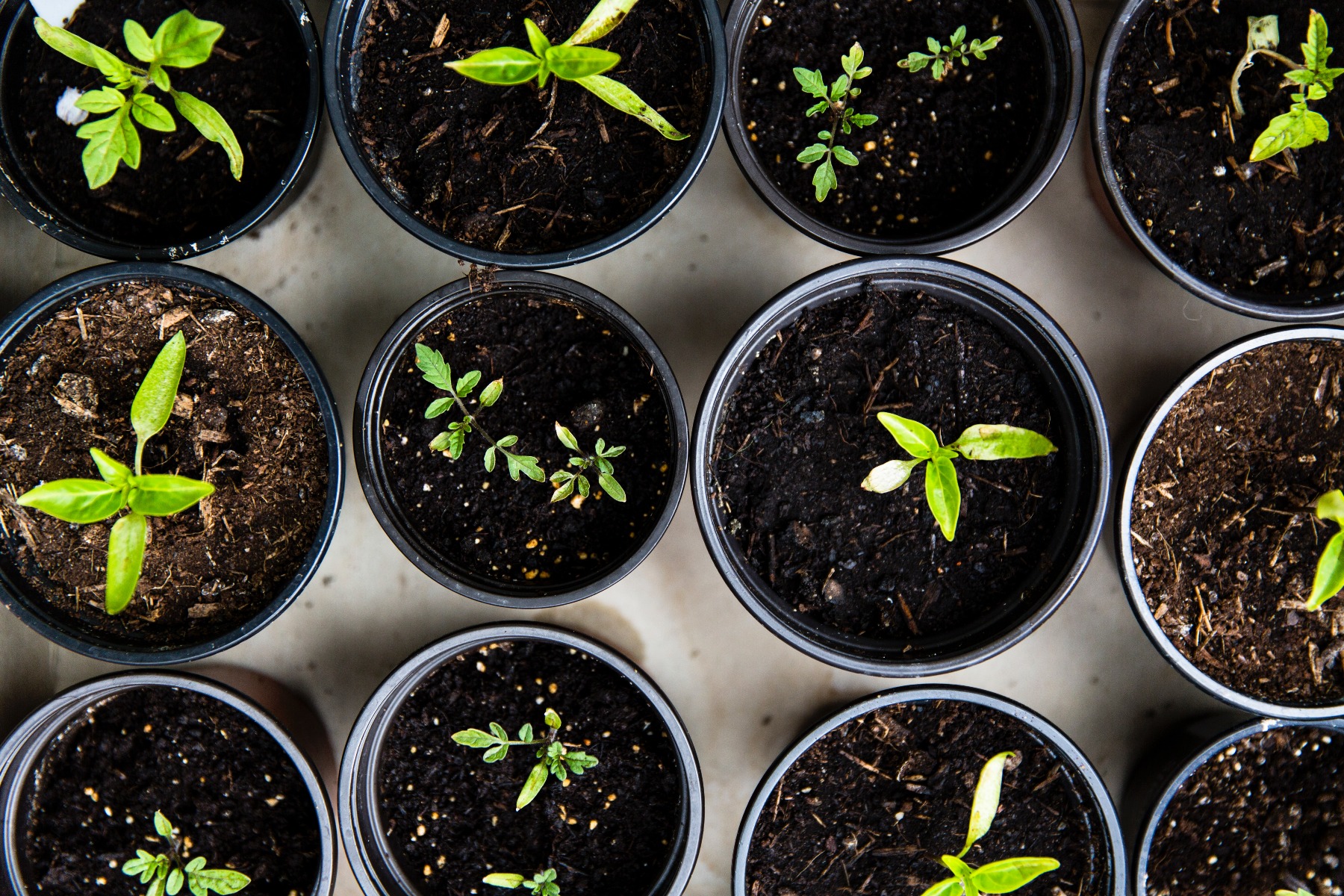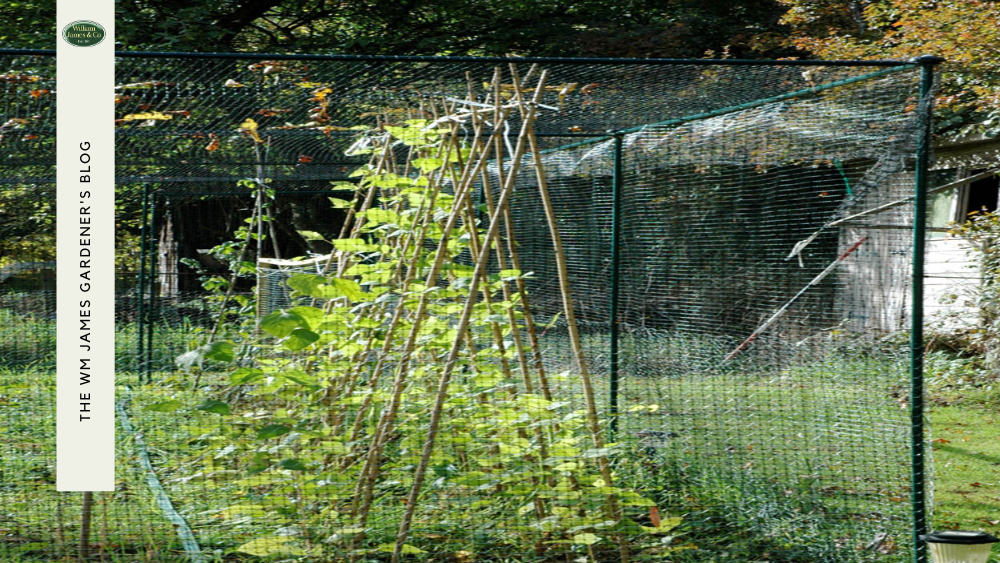We use cookies to make your experience better. To comply with the new e-Privacy directive, we need to ask for your consent to set the cookies. Learn more.
Plant Fertilising - The Ins & Outs of Feeding Plants
- Admin
- WM James Gardening Blog
- 7 Dec 2020
-
5views

When we see a home lush with indoor plants, a beautiful garden full of flowers or a vegetable patch yielding prize-winning produce we don't see all the work that has gone into preparing the ground, nurturing the soil, planting plans, watering and feeding.
Plant fertilising is a vital part of healthy plants - so where, in the full cycle of year-round gardening activity, does plant fertilising sit and just how important is fertilising in getting great results?
Why Should you Use Plant Fertiliser?
Gardeners use plant fertilisers to improve plant growth rates and boost flowering and yields, especially for plants grown in containers. However, plant fertilising isn't always necessary – sometimes looking after the soil is more important and enables plants to access nutrients already present in the ground.
Well managed soil will already be rich in nutrients essential for good plant growth, but even the best-managed garden plot can benefit from fertilisation. The way to maximise these benefits is to know when plant fertilising is best. Application of fertiliser in the wrong season can cause bursts of badly timed new growth that can succumb to cold weather.
What to Feed Plants
Key to knowing what to feed plants is the fact that there are 17 essential nutrients that all plants need, including carbon, hydrogen, and oxygen, which plants get from air and water. Nitrogen, phosphorus, and potassium are needed in larger amounts than other nutrients and they are considered as the primary macronutrients and the basics of what to feed plants.
The remaining 14 are obtained from soil but may need to be supplemented with fertilisers or organic materials such as compost. Secondary macronutrients include sulphur, calcium, and magnesium. Micronutrients such as iron and copper are necessary in much smaller amounts.
When assessing what to feed plants it’s good to know that too much fertiliser is not only a waste of money, but it can damage plants and harm the environment. With the right amount of nutrients, and knowing when and what to feed plants, your garden can thrive and provide flowering beauty and loads of produce for harvest.
The Three Building Blocks of Plant Fertilising
These primary macronutrients have the following properties:
N = Nitrogen promotes healthy leaf growth by stimulating the production of chlorophyll (the main chemical involved in photosynthesis—how plants convert sunlight to food).
P = Phosphorus supports the vigorous development of roots, stems, blossoms, and fruits.
K = Potassium plays a key role in helping plants digest and manufacture their foods.
To deliver these there are many different types of fertilisers for the many and varied kinds of plants, both indoor and outdoor. Here's a few examples:
Indoor plant fertiliser
The roots of garden plants can spread through the soil to find nutrients, but pot-grown houseplants are completely reliant upon you for the minerals they need so indoor plant fertiliser is of the utmost importance.
Houseplants usually require an equal balance of the three minerals contained in indoor plant fertiliser, such as 10-10-10 but certain varieties can vary. Foliage plants for example will benefit from fertilisers that are rich in nitrogen to keep them looking lush and green. Choose a nitrogen-rich indoor plant fertiliser that also contains magnesium to give yellow leaves a pick-me-up. Reduce plant feeding to once a month in autumn and stop adding indoor plant fertiliser altogether during the winter months.
Flowering plants should be given indoor plant fertiliser every two weeks in spring. Increase this to a weekly feed, with a fertiliser rich in potassium, in the run-up to flowering. Tomato fertilisers make very good indoor plant fertiliser and are ideal – but dilute by half the recommended dose as they can be too overpowering for indoor plants.
Vegetable Fertiliser
Feeding vegetables during the entire growing season with vegetable fertiliser increases growth and productivity. But be careful not to overfeed or underfeed. Diagnosing errors either way is challenging as many symptoms look alike.
Plants lacking nitrogen will show yellowing on older, lower leaves; too much nitrogen can cause excessive leafy growth and delayed fruiting. Vegetable fertiliser will be helpful with plants lacking phosphorus and without help they may show stunted growth or a reddish-purple tint in leaf tissue.
A potassium deficiency can cause browning of leaf tissue along the leaf edges, starting with lower, older leaves and will also indicate the need for vegetable fertiliser.
Organic Fertiliser
Organic fertilisers are carbon-based and derived from living organisms, such as compost, manure, fish emulsion or blood meal. Organic fertilisers are not water-soluble and therefore, they are released slowly to the plant. Microorganisms in the soil transform organic nutrients into plant-available forms, and this can take days to weeks.
However liquid organic fertilisers have already had the nutrients released into the water and are a great boost to leaf growth (nitrogen) and flower and fruit production (potash/potassium) when it is most needed.
These organic fertilisers can be produced for free out of plant materials and waste food composted, or leaf moulds swept up from the lawn and distributed across beds. Even wood ash from the firepit will deliver potash or potassium back to the soil.

How Often to Fertilise Plants
It’s a job to know how often and when to fertilise plants. As a rule, avoid fertilising new plants until they establish. Knowing when to fertilise plants means you can avoid causing a burst of growth that makes the plant weak and leggy. Some organic fertilisers, such as fish blood and bone or poultry manure pellets, are slow to release their nutrients and are applied in late winter or early spring in preparation for the growing season.
Knowing when to fertilise plants is as important as using the right fertiliser. If you don’t apply the fertiliser at a time when the plant can use it, there’s no point in fertilising. Knowing how often to fertilise plants means most perennials, annuals, vegetables, and lawns will reward you handsomely if fed with a balanced granular fertiliser in early spring.
Watching the weather forecast helps in knowing when to fertilise plants. Avoid fertilising before the spring showers or you will be throwing your money away, since the nutrients will simply leach out of the soil. Annuals like to be fed an additional three to four times during the growing season with a high-phosphorus, water-soluble fertiliser, while lawns benefit from a second granular application in early Autumn.
Trees and shrubs, especially those that flower, also like a dose of a balanced granular fertiliser in the spring and another in the Autumn. But remember to heed the phrase “late and light” when fertilising plants, trees and shrubs in autumn. Late Autumn is also a good time to fertilise bulbs, especially if you are planting them for the first time; a teaspoon of bone meal added to each bulb hole will generally be sufficient.
Roses have insatiable appetites. To keep them happy, feed them with a soluble fertiliser every seven days during their blooming season. “Weekly, weakly” is the feeding mantra for all roses and one of many “aide memoires” of knowing when to fertilise plants.
A note of caution when assessing how often to fertilise plants: Feed only well-established plants; fertilising seeds or tiny seedlings will cause fertiliser burn.
Feeding Plants in Containers
Use liquid feeds for feeding plants in containers and pots; it can be very easy to overdose with solid feeds, which can scorch plant roots when applied to the surface. Liquid fertilisers are best absorbed when feeding plants in containers are not under stress. So that means not fertilising your plants when they’re wilting or suffering from heat stress. Water them first, a few hours before fertilising them, to maximise their absorption of nutrients.
Best Fertiliser for Container Plants
Liquid kelp, seaweed, or fish-based fertilisers are the best fertiliser for container plants. Stop fertilising plants in winter, as they are not actively growing. Outdoor plants, such as vegetables, benefit from gentle formulas or slow-release fertiliser throughout the season. The slow-release will gradually feed the plants for months and make the best fertiliser for container plants.
Plant Feeding in Spring Time
Plant feeding is usually done in spring or summer, during the growing season. Few plants need fertiliser in the winter months, even if they are winter-flowering. Giving your plants a spring feed will help to encourage both root and shoot development, giving you a good yield of flowers and fruits, and a good amount of growth. This new spring growth will need all the nutrients and minerals it can get and this is where an organic fertiliser comes in.
A fertiliser feeds the plants directly rather than just enriching the soil, and contains a concentrated source of plant nutrients including nitrate and phosphate. Plant feeding with an organic fertiliser such as seaweed feed in early spring is great preparation for the growing season as organic fertilisers release their nutrients slowly, so will continuously promote growth throughout the season.
Summary
Gardening is a practical and scientific activity that relies on combining a great deal of specialist knowledge into a focused and long term relationship with our plants and the indoor and outdoor spaces where we place them.
Plant fertilising and feeding is basic care, as vital as watering and weeding. Understanding the chemical process of plant fertilisation and the best times of year to actively feed plants will guarantee you get the rewards from your efforts, whether that be lawn care, growing blooms, indoor plants or prize-winning vegetables.











